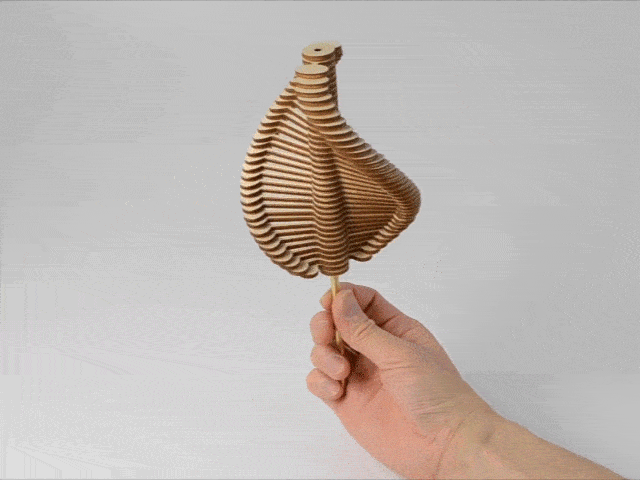John Edmark’s kinetic sculptures have a mesmerizing quality. At first glance, these works of art seem like intricately designed static objects, but when set in motion, they reveal an entirely different dimension. The movement uncovers a hidden mathematical harmony that is not just visually stunning but deeply rooted in the principles of geometry and nature.

Edmark, a design lecturer at Stanford University, is known for blending his love of art with a passion for mathematics. His sculptures are not simply aesthetic experiments; they are precise mathematical models. Inspired by the natural world, Edmark’s creations mimic patterns found in plants, seashells, and other organic forms. These sculptures often incorporate the Fibonacci sequence, the golden ratio, and spirals, principles that are prevalent in nature’s designs.

“Much of my work celebrates the patterns underlying space and growth. Through kinetic sculptures and transformable objects, I strive to give viewers access to the surprising structures hidden within apparently amorphous space,” says Edmark.
“While art is often a vehicle for fantasy, my work is an invitation to plunge deeper into our own world and discover just how astonishing it can be. In experiencing a surprising behavior, one’s sense of wonder and delight is increased by the recognition that it is occurring within the context of actual physical constraints. The works can be thought of as instruments that amplify our awareness of the sometimes tenuous relationship between facts and perception.”
Edmark’s work relies on excruciatingly precise laser-cut wood and 3D printing to create optical illusions and other unexpected behaviors. The core idea, however, hs challenging people’s perceptions.
“I employ precise mathematics in the design and fabrication of my work. I do this neither out of a desire to exhibit precision per se, nor to exalt the latest technology, but because the questions I’m trying to formulate and answer about spatial relationships can only be addressed with geometrically exacting constructions. Mathematical precision is an essential ally in my goal of achieving clarity.”
Edmark’s sculptures represent a fascinating intersection of disciplines: art, math, and technology. While they are undoubtedly artistic, their beauty is rooted in their mathematical rigor. The transformation that occurs in his kinetic sculptures serves as a visual metaphor for the hidden patterns that shape the natural world.
In a sense, Edmark’s works allow us to see the invisible, offering a glimpse into the mathematical laws that govern everything from the growth of plants to the formation of galaxies. These sculptures remind us that even in the most chaotic-seeming natural forms, there is an underlying order waiting to be discovered.
“Nature is generous and inexhaustible,” says Edmark — and it always tends to reward curiosity.



